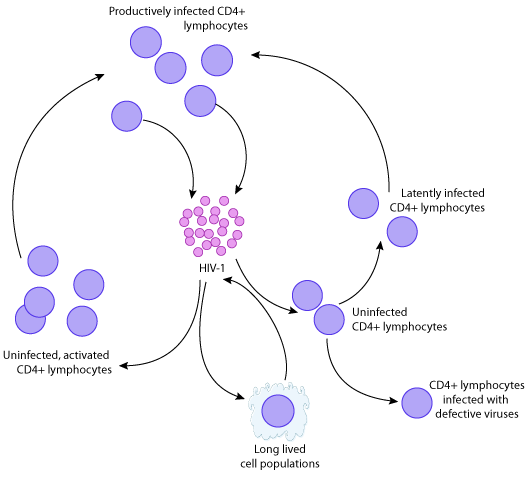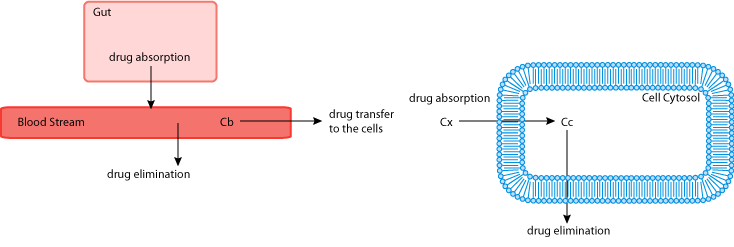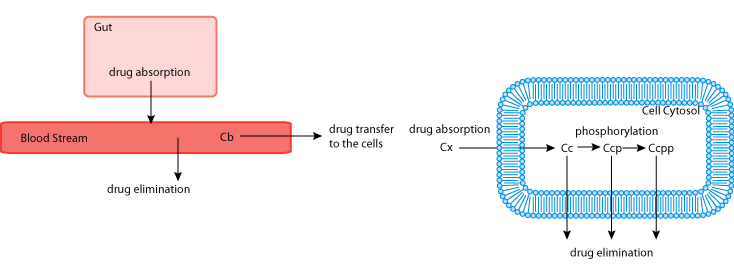Dixit, Perelson, 2004
Model Status
This model is valid CellML but can not be integrated as it is overconstrained. Some variables are not initialised but more importantly the model contains time delays, making it unsuitable for description using CellML.
Model Structure
When treated with antiretroviral therapy, the plasma viral loads in HIV patients decline in three distinct phases:
-
When the treatment is initially administered there is a 6 to 72 hour delay before the viral loads begin to decline;
-
following this shoulder period viral load decline rapidly for about one week;
-
finally, viral loads continue to decrease, but at a slower rate.
In the Dixit and Perelson 2004 publication described here, the authors present a mathematical model that combines pharmacokinetics and viral dynamics and includes intracellular delay. The model of viral dynamics is based on that published by Perelson et al. (see the figure below). To accurately represent the pharmacokinetics they assume a two compartment model consisting of blood and cells. The models of viral dynamics and pharmacokinetics are connected via a parameter which represents drug specific efficacy. Because reverse transcriptase inhibitors (RTIs) and protease inhibitors (PIs) have very different effects on the duration of the intracellular delay, they have been modelled separately (see and ).
The complete original paper reference is cited below:
Complex patterns of viral load decay under antiretroviral therapy: influence of pharmacokinetics and intracelllar delay, Narendra M. Dixit and Alan S. Perelson, 2004, Journal of Theoretical Biology , 226, 95-109. PubMed ID: 14637059
 |
| Schematic summary of the dynamics of HIV-1 infection in vivo. This model is based on that published by Perelson et al. in 1996. |
 |
| Pharmacokinetics - the two compartment model for protease inhibitors. |
 |
| Pharmacokinetics - the two compartment model for reverse transcriptase inhibitors. The main difference between the models is that RTIs must be phosphorylated within the cell in order to be in their active form. |
